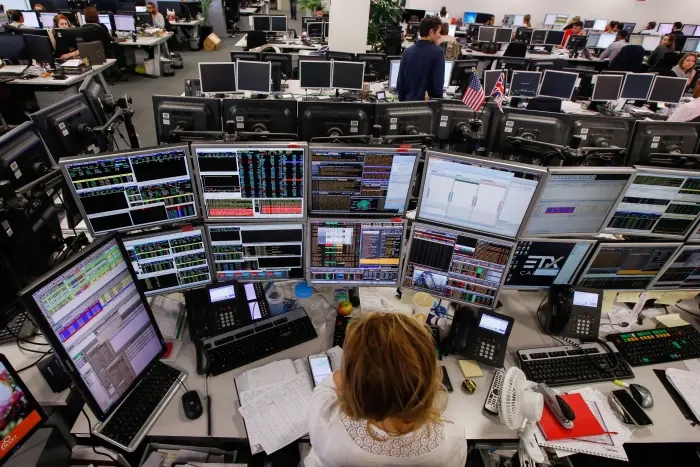
Markets have recovered over the past 24 hours after some more optimistic-sounding comments from President Trump on the prospect of a trade deal with China. Equities and bond yields moved higher while the NZD and AUD increased modestly.
After experiencing their biggest one-day falls since January at the start of the week, US equities have bounced back over the past 24 hours. As we write, the S&P500 is up 1.2% on the day, recovering around half the decline from Monday’s trading session. The IT and industrial sectors, which led losses on Monday, have outperformed (+1.8% and 1.4% respectively). The 10 year Treasury yield has increased 2bps to 2.42%, although the market still prices slightly more than one full rate cut by year-end.
The catalyst for the market reversal appears to have been some more optimistic soundbites from Trump over the past 24 hours. Around lunchtime yesterday, Trump told reporters “we'll let you know in about three or four weeks whether or not [the trade talks] was successful. ... But I have a feeling it's going to be very successful." Trump has followed that up with a number of trade-related tweets overnight including “when the time is right we will make a deal with China. My respect and friendship with President Xi is unlimited but, as I have told him many times before, this must be a great deal for the United States or it just doesn’t make any sense.”
China’s foreign ministry responded to US accusations that it had reneged on previously agreed commitments in the negotiations saying that the US had made a last-minute demand that it increase its purchases of US goods. A spokesman for China’s foreign ministry said “the hat that . . . violates promises is absolutely not on the Chinese head.” Markets are likely to remain volatile in the lead-up to the G20 in Osaka, Japan, where Trump and Xi are expected to meet.
In currencies, the Japanese yen reversed its gains from Monday amidst the recovery in risk assets. The JPY is down 0.3% on the day at 109.60, close to where it began the week. The GBP is the other underperformer on the session, down 0.3% to 1.2905, despite a surprise fall in the UK unemployment rate to a 44-year low of 3.8%. Negotiations between Theresa May and Jeremy Corbyn to find a compromise on Brexit remain deadlocked.
The EUR fell 0.2% to 1.1210 after Italy’s deputy Prime Minister Salvini said the country was willing to break the EU’s debt rules. Salvini said “if we need to break some limits, like the 3% (deficit to GDP) or 130-140% (debt to GDP ratio), we’re ready to go ahead. Until we arrive at 5% unemployment, we will spend everything that we should and if someone in Brussels complains, that won’t be our concern.” For the record, Italy’s unemployment rate is currently above 10%. Italian short-dated bond yields also moved higher in response to the remarks, with the 2 year Italian yield 6bps higher to 0.68%, its highest level this year (although it is over a percent lower than the level reached mid last year).
The offshore renmimbi (CNH) has stabilised over the past 24 hours after its sharp fall on Monday. USD/CNH is 0.1% stronger on the day at 6.9050. The AUD and NZD are up marginally over the past 24 hours. There was little reaction to yesterday’s Australian NAB business survey, which showed a fall in business conditions, led by the key employment index. The 7pt decline in the employment index to -1pt (the first negative print since early 2016) and declining job ads suggest labour market conditions have turned and add to the downside risk to the RBA’s optimistic outlook for unemployment.
The NZD rose during yesterday’s local session from 0.6565 to 0.6593 after Trump’s comment that he thought the trade talks would be successful. But it has slipped lower overnight to 0.6575. NZ rates fell 1bp to 2.5bps yesterday, led by the long-end of the curve. The 2 year swap rate made a new record low (on a closing basis) at 1.59%, while the 5 and 10 year swaps are within touching distance of their record lows.
There is plenty to focus on in the session ahead besides the President’s Twitter feed and reports on US-China trade negotiations. Monthly activity indicators are released in China (retail sales, industrial production and fixed asset investment) while retail sales is the key release in the US. Australia sees the release of the key wage price index, where our NAB colleagues look for a below-consensus 0.5% quarterly increase (0.6% consensus).
Get our daily currency email by signing up here:
Daily exchange rates
Select chart tabs
BNZ Markets research is available here.

We welcome your comments below. If you are not already registered, please register to comment
Remember we welcome robust, respectful and insightful debate. We don't welcome abusive or defamatory comments and will de-register those repeatedly making such comments. Our current comment policy is here.